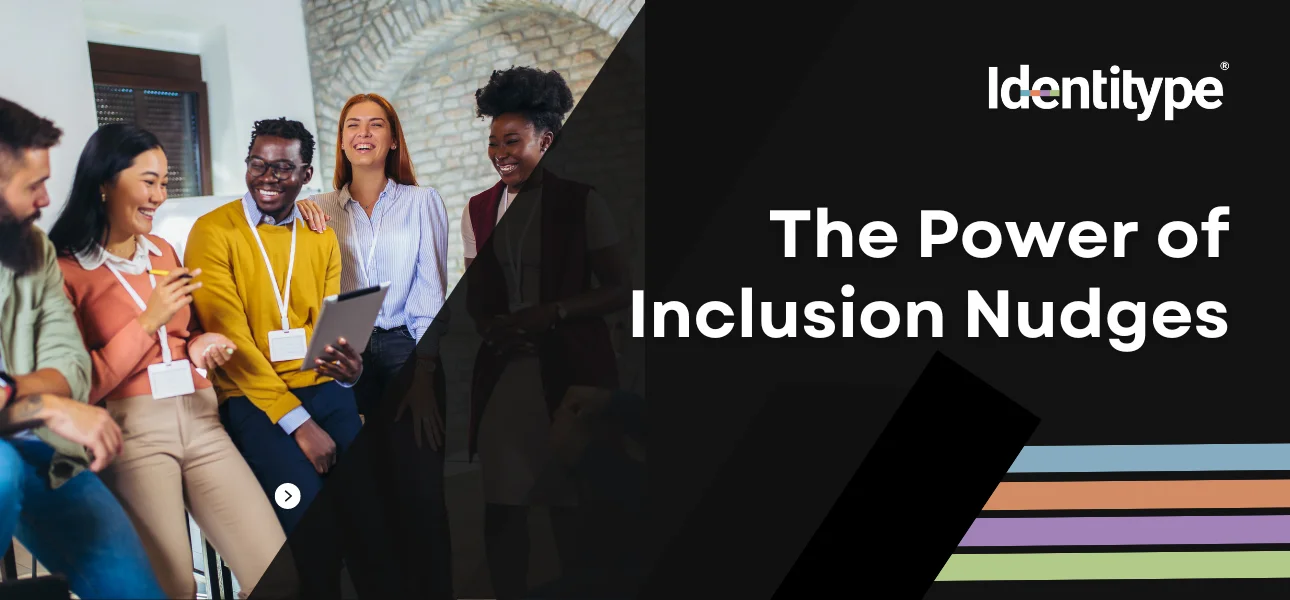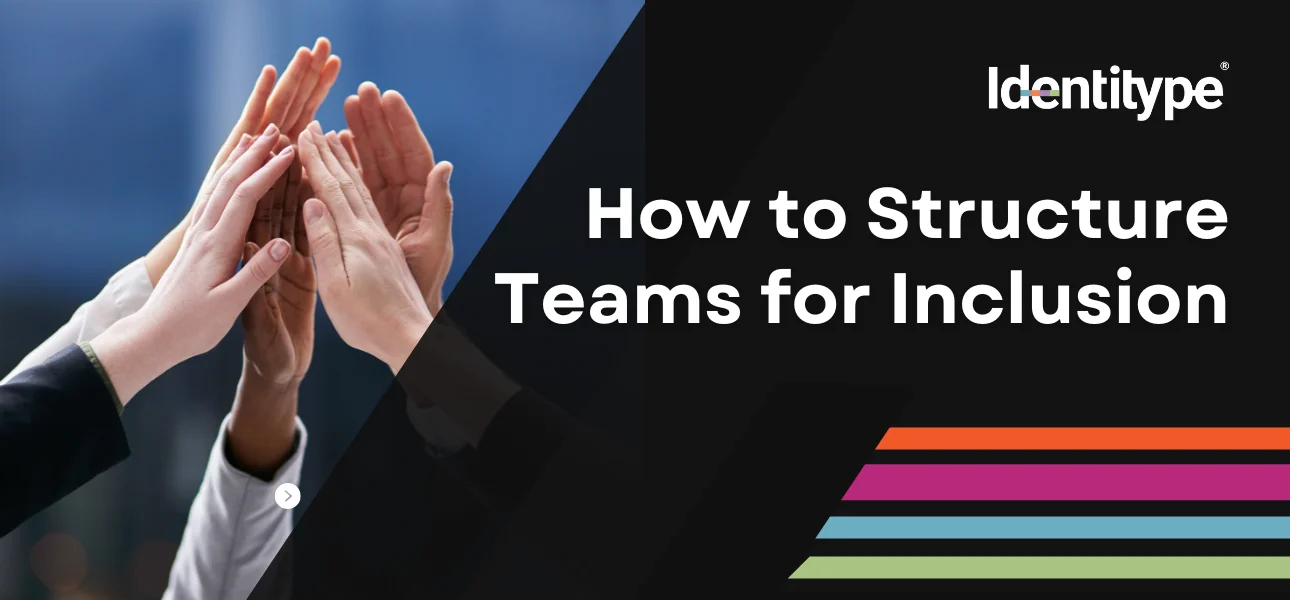Creating an inclusive workplace is an ongoing effort that requires intentional strategies and continuous improvement. One powerful approach to fostering inclusivity is the use of “inclusion nudges.” These small, subtle changes can significantly impact behavior, attitudes, and decision-making processes, promoting a more inclusive environment without the need for major overhauls. This blog will explore what inclusion nudges are, their importance, and practical examples of how to implement them in the workplace.
What Are Inclusion Nudges?
Inclusion nudges are subtle interventions designed to steer individuals’ behavior and decision-making in a way that promotes inclusivity and reduces biases. They are based on the principles of behavioral economics, which suggest that small changes in the way choices are presented can influence people’s actions in positive ways. Unlike mandates or strict policies, nudges work by gently guiding individuals towards more inclusive behaviors without restricting their freedom to choose.
Why Are Inclusion Nudges Important?
- Reduce Bias: Unconscious biases can influence decisions and interactions in the workplace. Inclusion nudges help to counteract these biases by making inclusive choices more intuitive.
- Promote Awareness: Nudges can increase awareness of diversity and inclusion issues, encouraging employees to be more mindful of their actions and attitudes.
- Enhance Engagement: By fostering a more inclusive environment, inclusion nudges can improve employee engagement, satisfaction, and retention.
- Facilitate Change: Implementing inclusion nudges is often easier and less disruptive than enacting sweeping policy changes, making them a practical tool for gradual cultural transformation.
Practical Examples of Inclusion Nudges
Implementing inclusion nudges can significantly enhance the inclusivity of your workplace by subtly influencing behaviors and decision-making processes. Here are detailed practical examples of how to apply these nudges and their impacts:
1. Redesigning Job Descriptions
- Nudge: Use gender-neutral language and highlight the organization’s commitment to diversity and inclusion in job descriptions.
- Implementation: Carefully review job postings to ensure that the language is inclusive and free from gender bias. For example, replace terms like “salesman” with “salesperson” and avoid gender-specific pronouns. Additionally, explicitly state the company’s dedication to creating a diverse and inclusive workplace.
- Impact: This approach attracts a more diverse pool of applicants by reducing the likelihood of deterring potential candidates from underrepresented groups. Inclusive job descriptions signal to applicants that the organization values diversity, which can increase the interest of candidates who might otherwise feel excluded.
2. Structured Interviews
- Nudge: Implement structured interview questions that are the same for all candidates, reducing the influence of personal biases.
- Implementation: Develop a set of standardized questions related to the job requirements and competencies. Train interviewers to follow this structured format and evaluate all candidates using the same criteria.
- Impact: Structured interviews ensure a fairer and more consistent evaluation process, improving the chances of selecting the best candidates based on merit. By minimizing the impact of personal biases, this approach helps to create a more equitable hiring process.
3. Blind Recruitment
- Nudge: Remove identifying information such as names, gender, and age from resumes during the initial screening process.
- Implementation: Use software tools or manual processes to redact personal information from resumes before they are reviewed by hiring managers. Focus on qualifications, skills, and experiences relevant to the job.
- Impact: Blind recruitment helps to prevent unconscious biases from influencing hiring decisions, promoting a more diverse workforce. By evaluating candidates solely on their qualifications, organizations can ensure a more equitable selection process.
4. Inclusive Meeting Practices
- Nudge: Establish guidelines to ensure everyone has an opportunity to speak, such as round-robin participation or using a “talking stick.”
- Implementation: Set clear expectations for meeting conduct, such as rotating speaking opportunities or using a tool that signals who has the floor. Encourage quieter team members to share their ideas and ensure dominant voices do not overshadow others.
- Impact: Inclusive meeting practices encourage input from all team members, fostering diverse perspectives and more inclusive decision-making. This approach ensures that everyone feels heard and valued, contributing to a more collaborative work environment.
5. Diverse Imagery and Messaging
- Nudge: Use diverse images and inclusive language in company communications, marketing materials, and internal documents.
- Implementation: Regularly review and update visual and written content to reflect a diverse range of people and perspectives. Ensure that marketing materials, website content, and internal communications represent various demographics.
- Impact: Diverse imagery and messaging reflect and reinforce the organization’s commitment to diversity, helping employees and clients feel more represented and valued. This can enhance the organization’s reputation and foster a sense of belonging among all stakeholders.
6. Bias Interruption Training
- Nudge: Offer training sessions that teach employees how to recognize and interrupt biases in real-time.
- Implementation: Conduct workshops and training sessions focused on identifying and addressing unconscious biases. Provide practical tools and techniques that employees can use to interrupt bias in their daily interactions.
- Impact: Bias interruption training equips employees with the skills to address biases as they arise, promoting a more inclusive culture. By empowering employees to take action against bias, organizations can foster a more equitable and respectful work environment.
7. Feedback Mechanisms
- Nudge: Implement anonymous feedback systems that allow employees to report instances of bias or exclusion without fear of retaliation.
- Implementation: Set up anonymous surveys, suggestion boxes, or digital platforms where employees can provide feedback on their experiences. Ensure that these systems are easy to access and that there is a clear process for addressing concerns.
- Impact: Anonymous feedback mechanisms encourage open communication and accountability, helping the organization to address issues promptly and effectively. This can lead to a more transparent and supportive workplace where employees feel safe to voice their concerns.
8. Inclusive Decision-Making
- Nudge: Ensure that decision-making teams are diverse and representative of the broader employee population.
- Implementation: When forming committees or decision-making bodies, intentionally include members from diverse backgrounds and perspectives. Encourage diverse viewpoints in discussions and decision-making processes.
- Impact: Inclusive decision-making brings a variety of perspectives to the table, leading to more well-rounded and inclusive decisions. This approach not only enhances the quality of decisions but also demonstrates the organization’s commitment to diversity and inclusion.
How to Implement Inclusion Nudges
Implementing inclusion nudges effectively requires a strategic and thoughtful approach. This process involves several key steps that ensure the interventions are tailored to your organization’s specific needs, tested for effectiveness, and supported by a culture that values continuous improvement and inclusivity. Here is a detailed guide on how to implement inclusion nudges in your workplace:
1. Identify Areas for Improvement
The first step in implementing inclusion nudges is to conduct a comprehensive audit of your current practices and policies. This audit should aim to identify areas where biases and exclusion might occur. Consider the following actions during this phase:
- Gather Data: Collect quantitative and qualitative data on various aspects of your workplace, such as recruitment, promotion, performance evaluations, and employee engagement. Use surveys, interviews, and focus groups to gain insights from employees at all levels.
- Analyze Trends: Look for patterns and trends in the data that may indicate biases or inequities. For example, examine whether certain groups are underrepresented in leadership positions or if there are disparities in performance ratings.
- Benchmarking: Compare your organization’s data with industry standards and best practices to identify gaps and areas for improvement.
- Consult Diverse Voices: Engage employees from diverse backgrounds in the audit process to ensure a wide range of perspectives are considered.
2. Design Targeted Nudges
Once areas for improvement have been identified, the next step is to develop specific nudges tailored to address these issues. Consider the following when designing your nudges:
- Behavioral Insights: Utilize principles from behavioral science to understand how people make decisions and what factors influence their behavior. This can help in designing nudges that effectively steer behavior towards inclusivity.
- Expert Consultation: Consider working with behavioral science experts or consultants who specialize in diversity and inclusion to design effective nudges.
- Customization: Tailor the nudges to fit the specific context and culture of your organization. What works for one company might not be effective for another, so customization is key.
- Example Nudges: Develop examples of potential nudges, such as using blind recruitment processes to eliminate bias in hiring, or restructuring performance reviews to ensure diverse perspectives are considered.
3. Pilot and Measure
Before rolling out inclusion nudges across the entire organization, it is essential to test them on a smaller scale. This pilot phase allows you to assess their effectiveness and make necessary adjustments. Follow these steps:
- Select a Pilot Group: Choose a specific department, team, or location to pilot the nudges. Ensure this group is representative of the broader organization to get meaningful insights.
- Implement Nudges: Introduce the designed nudges to the pilot group and communicate their purpose and expected outcomes clearly.
- Collect Data: Gather data on the impact of the nudges during the pilot phase. This can include feedback from employees, changes in behavior, and any shifts in key metrics related to diversity and inclusion.
- Analyze Results: Evaluate the effectiveness of the nudges by analyzing the collected data. Look for positive changes and identify any areas that need refinement.
4. Scale Up
Once the pilot phase has demonstrated the effectiveness of the inclusion nudges, it’s time to roll them out more broadly across the organization. This phase involves:
- Developing a Rollout Plan: Create a detailed plan for scaling up the nudges, including timelines, responsibilities, and resources needed.
- Training and Communication: Provide training for managers and employees on the new nudges and their importance. Clear communication is vital to ensure everyone understands the purpose and benefits of the nudges.
- Implementation: Gradually implement the nudges across different departments and teams. Monitor the rollout to ensure it is proceeding smoothly.
- Continuous Monitoring: Keep track of the nudges’ impact as they are implemented more broadly. Collect ongoing feedback and data to assess their effectiveness.
5. Foster a Nudge-Friendly Culture
For inclusion nudges to be sustainable and effective, they must be supported by a workplace culture that values experimentation, openness to change, and continuous improvement. Here’s how to foster such a culture:
- Leadership Support: Ensure that organizational leaders champion the inclusion nudges and model inclusive behaviors. Leadership support is crucial for creating a culture that embraces change.
- Encourage Experimentation: Promote a mindset of experimentation where employees feel comfortable trying new approaches and learning from their experiences. Recognize and reward efforts to innovate and improve inclusivity.
- Open Communication: Maintain open lines of communication about the nudges, their purpose, and their impact. Encourage employees to share their experiences and suggestions for improvement.
- Provide Resources: Offer resources and support to help employees understand and adopt the new nudges. This can include training programs, informational materials, and access to experts.
- Celebrate Successes: Highlight and celebrate successes resulting from the inclusion nudges. Sharing positive outcomes can build momentum and encourage broader adoption.
These small, strategic changes can lead to significant improvements in behavior, attitudes, and overall workplace culture, ultimately contributing to a more supportive and productive environment for all employees.
Conclusion
Inclusion nudges offer a practical and effective way to promote diversity and inclusivity in the workplace. By making small, strategic changes, organizations can guide employees towards more inclusive behaviors and decision-making processes, ultimately fostering a more equitable and supportive environment. As part of a broader diversity and inclusion strategy, inclusion nudges can help to create lasting cultural change and drive organizational success.




